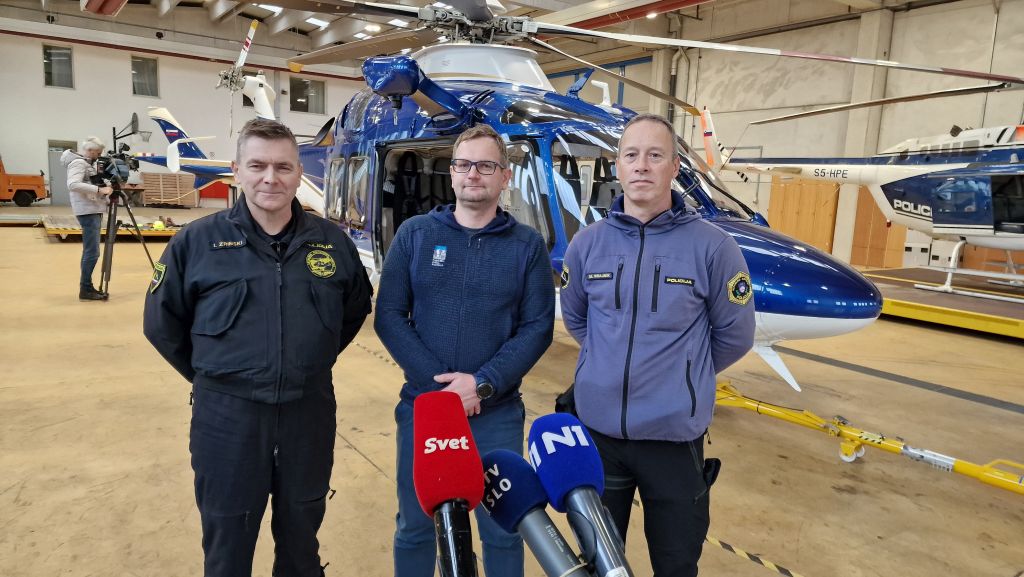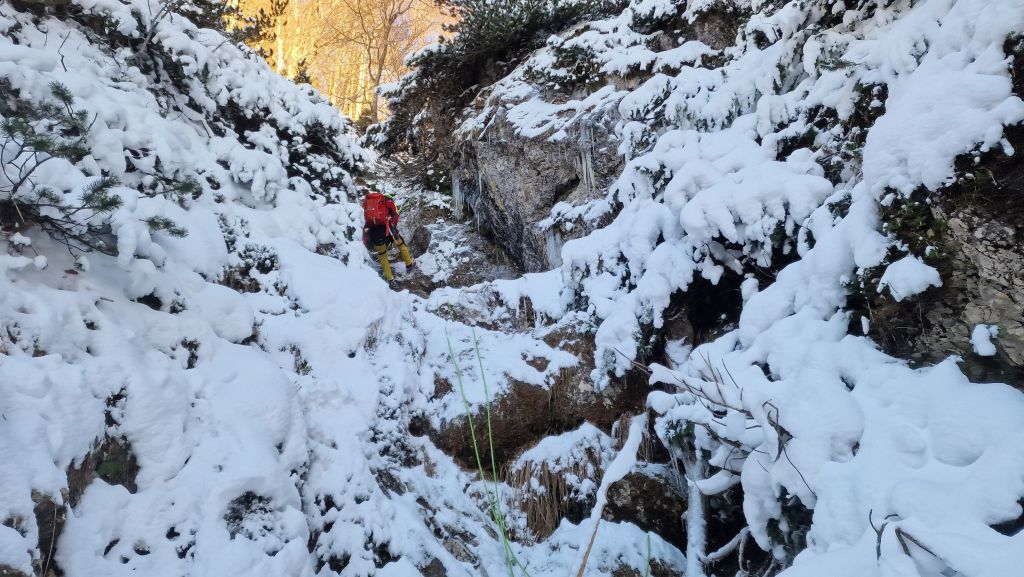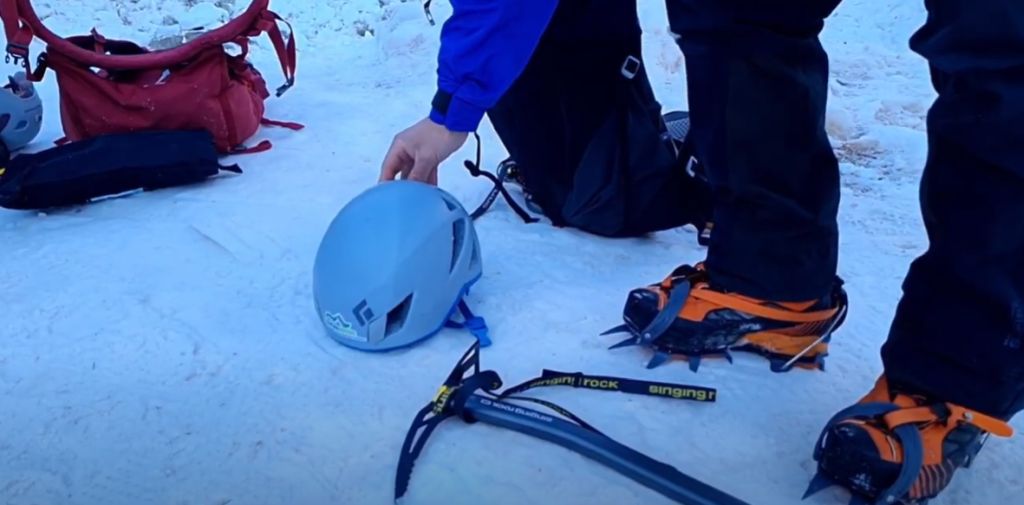Together with a representative of the Alpine Association of Slovenia, members of the Mountain Police Unit and the Air Police Unit warned about the many dangers of visiting the mountains at this time of year. It is important to be well prepared when hiking in winter conditions.

For several weeks now, the mountains have been experiencing challenging winter conditions, with low temperatures, wind, snow, ice, short days, fog and mostly closed mountain huts.
These and other specific features give winter in the high mountains a well-deserved reputation as a dangerous time. Going to the mountains therefore requires careful preparation, plenty of experience, good and appropriate equipment and, above all, a great deal of caution, which can reduce many risks.
Regardless of the thickness of the snow layer, the snow has already created conditions that significantly increase the level of danger
The avalanche risk level is currently moderate. Snowfall is low in the mid-mountains, but higher in the high mountains, where snow cover increases rapidly above 2,000 m above sea level.
Regardless of the thickness of the snowpack, the snow has already created conditions that significantly increase the level of danger. Where there is little snow, we are faced with patches of ice; where there is more snow, it forms patches, is unevenly packed, covers paths and, in some places, accumulates or piles up. The ridges are blown and icy or hard. Conditions change with each snowfall, so the risk of accidents and avalanches increases with each snowfall and change. In the current conditions, crossing exposed slopes and peaks with drifting snow is already extremely dangerous.

Do not be fooled by the apparently favourable winter conditions in the mountains
The tragic accidents last January, when six mountaineers lost their lives, show that the mountains can be dangerous in winter, even when the conditions are apparently good and you have the right equipment.
Of course, the danger is even greater when walkers do not have even the most basic mountaineering equipment. The most recent example of this is the case of two inadequately equipped hikers who got lost in the area of Hruška planina last Sunday, 10 December. The two foreigners were searched for the whole day, in extremely difficult conditions, including by helicopter, until they were finally found by rescuers in the late afternoon, when it was already getting dark. They were cold and hypothermic. They had been walking along a dangerous trackless path with high rock ledges, where the terrain is steep, rocky, icy and precipitous, and requires mountaineering equipment. In the area of the Presušnik waterfall, one of the foreigners was also injured when he descended the dangerous terrain without equipment and jumped over high rock jumps into a ravine. Both men were ill-equipped and underdressed.
What equipment is essential for winter walking
Check the conditions before you go, make a detailed plan and make sure you have all your equipment, both basic and specialist. Basic equipment includes good walking boots, good quality and spare clothing, gloves, a hat, gaiters to keep snow out of your boots, warm drinks and food.
A map, head torch, first aid kit, mobile phone with a full battery and an alufoil to protect against hypothermia are also essential. A large plastic bag can perform a similar function to an alufoil.

Avalanche triplet: beacon, probe and shovel
An avalanche triple pack consisting of an avalanche beacon, an avalanche probe and an avalanche shovel, is an obligatory part of every mountaineer's technical equipment. The avalanche beacon is used to search for a person who has been caught in an avalanche, the avalanche probe is used to locate a person trapped in an avalanche, and the avalanche shovel is used to dig out and rescue a person buried in an avalanche. The avalanche triplet is only useful as a kit and you need to know how to use it.

Two other "triplets" are essential for the mountains in winter:
- crampons, ice axe, helmet
When it comes to crampons, we must distinguish between crampons and clogs (also called chain crampons or small crampons). Crampons are for mountains, while clogs are for lowland walking.
- adequate psychophysical condition, correct use of equipment and experience in winter conditions
While most walkers already have this equipment, accidents are mainly due to inexperience and lack of knowledge of how to use it, as well as inability to assess and adapt to the terrain conditions. The third "triplet" is therefore crucial as well, but also the most difficult to learn.
With knowledge and the right equipment, subjective dangers are reduced, while with good preparation and experience, we learn to recognise objective dangers in the mountains. Mountaineers can gain knowledge and experience by attending appropriate courses or by securing the assistance of registered mountain and hiking guides for their trips.
Questions to ask yourself before going to the mountainsBefore going into the mountains, we always ask a number of questions that determine the level of risk. These include:
|
Some more "golden commandments" and facts
- Do not expose your child to danger!
- Accidents are mainly due to inexperience in using the equipment, lack of knowledge and inability to assess the situation.
- Experience should be gained gradually and on easier routes.
- Information should be obtained from verified or reliable sources.
- The equipment is available, but you need to know how to use it properly.
- Choosing and using the right mountaineering equipment is vital.
- Equipment loses its function if used incorrectly.
- At least two people should go on a hike together.
- Extreme caution is needed, as well as a high level of responsibility on the part of individuals and groups.
- If, despite all preparations and precautions, an accident occurs, call the emergency number 112 immediately.



